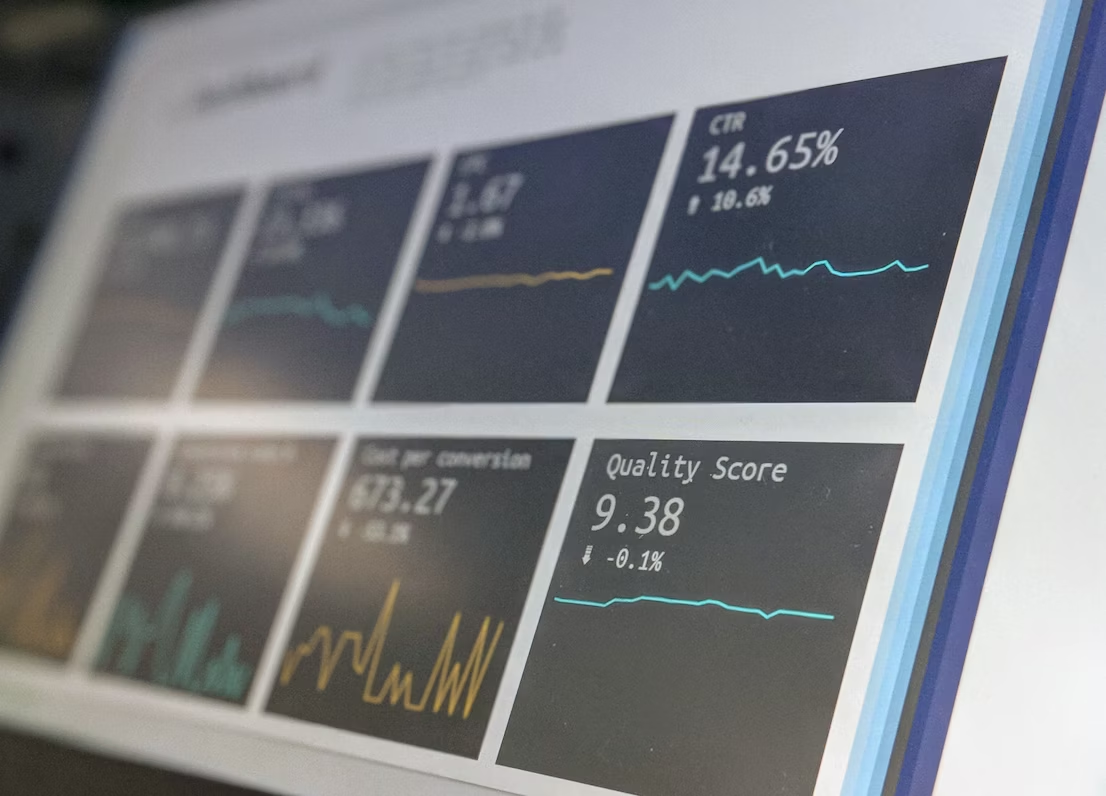In the vibrant world of theater, the spotlight often shines brightest on the actors, directors, and playwrights—those who create the magic on stage. But behind the scenes, there's another star player that's just as important: the economic model. It's the unsung hero that keeps the show running smoothly. This blog aims to cast a light on the role of economic models in theater institutions.
1. Explore the concept of economic models in theater institutions
When you hear the term "economic models for theater institution," what comes to mind? It's not as daunting as it might sound. Think of it like a backstage blueprint, a plan that outlines how a theater makes and spends its money.
There are several different types of economic models that theaters use. Some are as old as the playhouses of Shakespeare's day; others are new and innovative, born from the digital age. But all of them share the same goal: to ensure the financial stability of the institution while enabling it to continue producing and showcasing fantastic performances.
Here's a quick breakdown of what the economic models for theater institutions might entail:
- Revenue sources: This could be anything from ticket sales, to donations, to grants, and more.
- Expenditures: This covers all the costs of running a theater, like production costs, staff salaries, and building maintenance.
- Pricing strategies: Theaters need to decide how much to charge for tickets—too high, and they might drive away potential audience members; too low, and they might not cover their costs.
- Funding models: This involves strategizing how to secure ongoing financial support, be it through a subscription model, partnerships, or other avenues.
So why does all this matter? Well, the right economic model can make the difference between a theater institution thriving or closing its curtains for good. And as anyone in the theater world will tell you, the show must always go on.
Next up, we'll venture into the past and examine the traditional economic model for theaters. But don't worry—we won't make you sit through a three-hour Shakespearean tragedy. We promise!
2. Analyze the traditional economic model for theaters
Let's hop into our time machine and journey back to the origins of theater. While the stage may have changed over the centuries, the traditional economic model for theaters has remained surprisingly consistent.
Historically, most theater institutions relied heavily on two main sources of income: ticket sales and donations.
- Ticket Sales: The bread and butter of most theater institutions, ticket sales have always been a crucial part of the traditional economic model. Theaters would set a fixed price for their tickets and hope that the allure of their performance would bring in the crowds.
- Donations: Whether it's a wealthy patron or a small contribution from a passionate theater enthusiast, donations have long been a lifeline for many institutions. In fact, some of the grandest theaters of the past were funded almost entirely by generous benefactors.
However, this model has its limitations. Relying heavily on ticket sales puts a lot of pressure on each performance to be a hit. One poorly received show could spell disaster for the theater's finances. Similarly, relying on donations can be unpredictable, as it often depends on the goodwill of individuals or organizations.
Despite these challenges, many theaters have managed to survive— and even thrive— using this traditional model. But as we move forward in time, we'll see that innovation and adaptability have led to new and exciting economic models for theater institutions. Buckle up, because next we're going to explore the subscription model and its impact on the theater industry.
3. Evaluate the benefits and drawbacks of the subscription model
Moving on from the traditional model, let's turn our attention to the subscription model. In recent years, this approach has gained popularity among theater institutions— and for good reason.
The subscription model has a simple premise: patrons pay a fixed amount upfront for a season’s worth of performances. Sounds appealing, right? It certainly can be, but let's look at both sides of the coin.
Benefits of the Subscription Model
- Stable Revenue Stream: Subscriptions provide a predictable and steady income for theaters. Knowing how much money is coming in each season can be a game-changer, allowing institutions to plan their budgets more accurately.
- Loyal Audience: Subscribers often become regular attendees, which can help to build a loyal and engaged audience.
- Risk Mitigation: With a guaranteed income, theaters can take more creative risks without the fear of a single show flopping and impacting ticket sales.
Drawbacks of the Subscription Model
While the subscription model might seem like the perfect solution, it's not without its challenges:
- Reduced Flexibility for Patrons: Subscribers commit to watching a whole season of performances, which may not suit everyone's schedule or preferences.
- Upfront Costs Can Be Prohibitive: The upfront cost of a subscription can be high, potentially limiting access to those on a tighter budget.
- Pressure to Deliver: With subscriptions, there's added pressure to deliver a consistently high-quality lineup of shows. If a season disappoints, it could harm future subscription sales.
The subscription model is an interesting shift from the traditional economic model for theater institutions. It's not a one-size-fits-all solution, but it certainly offers a fresh perspective on how theaters can sustain themselves. Next, we're going to shake things up even more as we dive into the world of dynamic pricing. Buckle up!
4. Investigate the impact of dynamic pricing in theater economics
Hang on to your seats folks, we're about to venture into the thrilling world of dynamic pricing! This economic model for theater institutions takes a cue from airlines and hotels by adjusting prices based on demand. Intrigued? Let's dive in!
Understanding Dynamic Pricing
In the simplest terms, dynamic pricing is a strategy that adjusts ticket prices in real-time based on a variety of factors such as demand, timing, and seat location.
- Demand: If a show is super popular, ticket prices might rise. Conversely, if a show is struggling to fill seats, prices may drop.
- Timing: Tickets may be more expensive closer to the show date or during peak times, like weekends.
- Seat Location: Just like at a sports game, where you sit can impact the price of your ticket.
The Impact of Dynamic Pricing on Theater Economics
Dynamic pricing offers a new way to think about revenue generation for theaters. Here are some key considerations:
- Maximize Profit: Dynamic pricing can maximize revenue when demand is high. This can help to offset costs for shows that are less popular.
- Flexibility: This model allows theaters to respond to market conditions in real-time, providing a level of flexibility that traditional and subscription models lack.
- Efficient Use of Space: By incentivizing cheaper seats, dynamic pricing can help to ensure fuller houses.
However, it's not all roses and standing ovations.
The Challenges of Dynamic Pricing
Dynamic pricing, while innovative, can present some challenges:
- Perceived Unfairness: Patrons may feel frustrated if they pay more for a ticket than the person sitting next to them.
- Complexity: It can be complex to implement and manage, requiring sophisticated software and a good understanding of the market.
- Barrier to Entry: For some, fluctuating prices might create uncertainty or make theatergoing seem less accessible.
There you have it—dynamic pricing in a nutshell. This economic model for theater institutions offers an intriguing blend of flexibility and profit maximization, with some potential pitfalls to navigate. As we move forward, it will be fascinating to see how theaters balance these considerations. Now, let's shoot a glance into the future of theater economics!
5. Discuss the future of economic models in theater institutions
As we journey into the future of theater economics, it's clear that the script is still being written. The landscape is shifting, and economic models for theater institutions are evolving right along with it. So, what could the future hold? Buckle up—it's time to explore!
Evolution of Subscription Models
Subscription models aren't going away anytime soon, but they are likely to adapt. Theaters might start to offer more flexible subscriptions, allowing patrons to choose a certain number of shows from a larger pool. This flexibility could be a win-win, providing theaters with a steady source of revenue while offering patrons more choice and control.
Rise of Hybrid Models
The future may see a rise in hybrid models. Imagine a world where the stability of subscriptions meets the flexibility of dynamic pricing—a theater lover's dream! Theaters could offer tiered subscriptions, with different price points based on seat location and timing, then apply dynamic pricing principles within each tier.
Increased Use of Technology
The use of technology in theater economics is set to grow. We've already seen this with dynamic pricing, but the future might bring even more innovations. Think personalized pricing based on individual patron data, or automated systems that adjust prices based on real-time demand.
Commitment to Accessibility
Finally, no conversation about the future of theater economics would be complete without discussing accessibility. Theaters are increasingly recognizing the importance of making performances accessible to all. This could lead to more innovative pricing strategies, such as pay-what-you-can models or discounted tickets for under-served communities.
The future of economic models for theater institutions is a thrilling blend of old and new, stability and flexibility. As the curtain falls on our exploration, remember: the future is an open script, and we're all part of the audience, waiting to see what happens next.
.webp)








